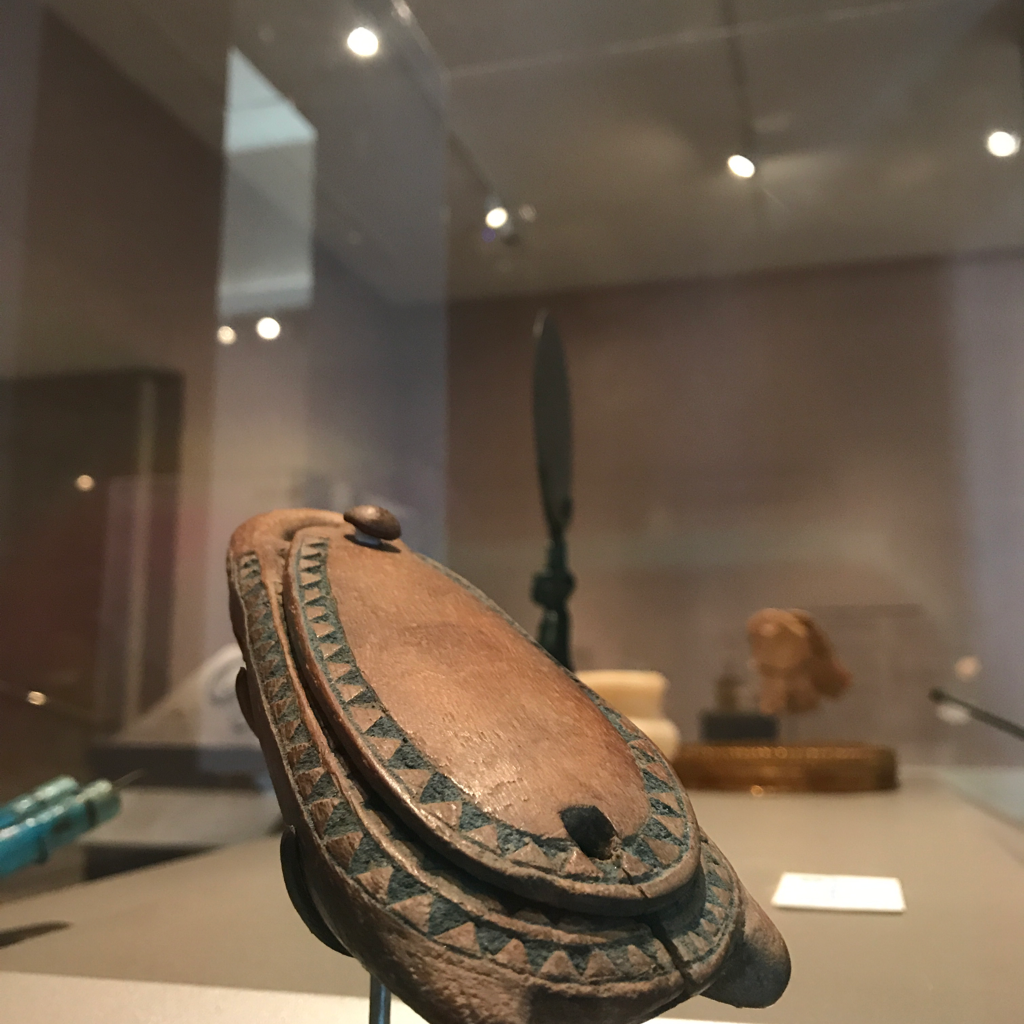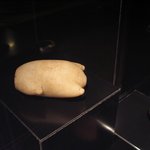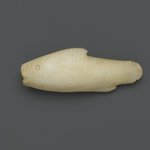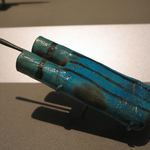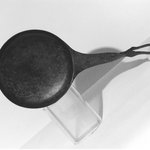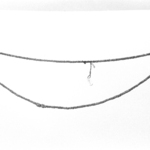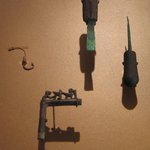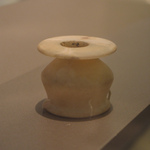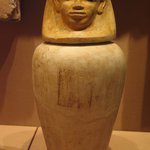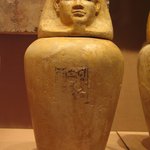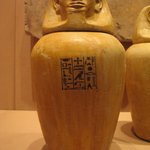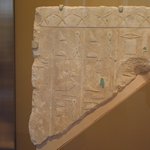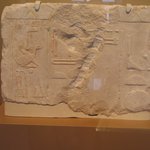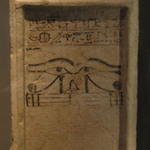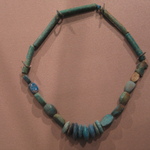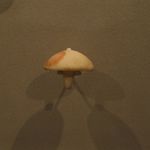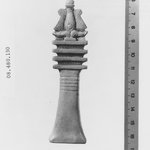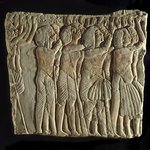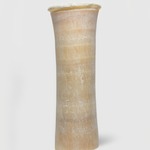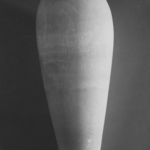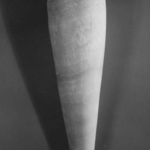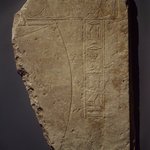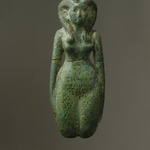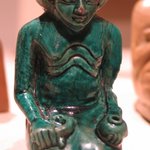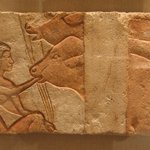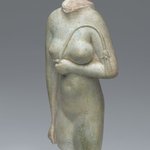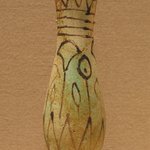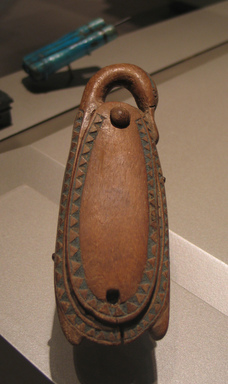
Cosmetic Container in Form of Trussed Duck
Egyptian, Classical, Ancient Near Eastern Art
On View: Egyptian Orientation Gallery, 3rd Floor
Cosmetic Containers
Like us, the ancient Egyptians used cosmetics, and often for the same purposes.
Archaeologists use the term “cosmetic container” to describe a variety of Egyptian boxes that once held scented, oil-based ointments. The salves in these boxes were used by women and men to heighten sexual allure and to camouflage body odor. Orange or yellow stains seen on ancient representations of clothing and on actual surviving linen garments show how liberally such ointments were applied.
Like us, the ancient Egyptians used cosmetics, and often for the same purposes.
Archaeologists use the term “cosmetic container” to describe a variety of Egyptian boxes that once held scented, oil-based ointments. The salves in these boxes were used by women and men to heighten sexual allure and to camouflage body odor. Orange or yellow stains seen on ancient representations of clothing and on actual surviving linen garments show how liberally such ointments were applied.
MEDIUM
Wood, paste, pigment
DATES
ca. 1539-1292 B.C.E.
DYNASTY
Dynasty 18
PERIOD
New Kingdom
DIMENSIONS
1 3/4 × 2 1/4 × 6 3/4 in. (4.4 × 5.7 × 17.1 cm) (show scale)



COLLECTIONS
Egyptian, Classical, Ancient Near Eastern Art
ACCESSION NUMBER
37.613E
CREDIT LINE
Charles Edwin Wilbour Fund
CATALOGUE DESCRIPTION
Wooden toilet box in the shape of a trussed duck. The body of the duck is hollowed-out and topped with a cover which pivots at the head end. The outer edges of the cover are decorated with incised triangles inlaid with a blue paste. The whole is outlined with two finely incised lines also inlaid with blue paste. The same motif surrounds the opening of the body. The head and neck are carved in the round, the head curved back so that the beak lies flat, joined to the side of the body. The eyes, the line where beak and head join, and three narrow triangular bands on top of the head were once inlaid with blue paste, traces of which still remain. On the underside of the body, the legs, webbed feet and wings are indicated in raised relief.
Condition: Excellent workmanship. The paste inlay is intact for the most part. The knobs which fasten the cover to the body at the tail ends are now missing. The tail end of the body has a crack as does the cover at the same end. There are traces of white pigmentation on the underside of the body.
EXHIBITIONS
MUSEUM LOCATION
This item is on view in Egyptian Orientation Gallery, 3rd Floor
CAPTION
Cosmetic Container in Form of Trussed Duck, ca. 1539-1292 B.C.E. Wood, paste, pigment, 1 3/4 × 2 1/4 × 6 3/4 in. (4.4 × 5.7 × 17.1 cm). Brooklyn Museum, Charles Edwin Wilbour Fund, 37.613E. Creative Commons-BY (Photo: Brooklyn Museum, CUR.37.613E_erg456.jpg)
IMAGE
overall, CUR.37.613E_erg456.jpg. Brooklyn Museum photograph, 9/6/2007
"CUR" at the beginning of an image file name means that the image was created by a curatorial staff member. These study images may be digital point-and-shoot photographs, when we don\'t yet have high-quality studio photography, or they may be scans of older negatives, slides, or photographic prints, providing historical documentation of the object.
RIGHTS STATEMENT
Creative Commons-BY
You may download and use Brooklyn Museum images of this three-dimensional work in accordance with a Creative Commons license. Fair use, as understood under the United States Copyright Act, may also apply.
Please include caption information from this page and credit the Brooklyn Museum. If you need a high resolution file, please fill out our online application form (charges apply).
For further information about copyright, we recommend resources at the United States Library of Congress, Cornell University, Copyright and Cultural Institutions: Guidelines for U.S. Libraries, Archives, and Museums, and Copyright Watch.
For more information about the Museum's rights project, including how rights types are assigned, please see our blog posts on copyright.
If you have any information regarding this work and rights to it, please contact copyright@brooklynmuseum.org.
RECORD COMPLETENESS
Not every record you will find here is complete. More information is available for some works than for others, and some entries have been updated more recently. Records are frequently reviewed and revised, and we welcome any additional information you might have.


